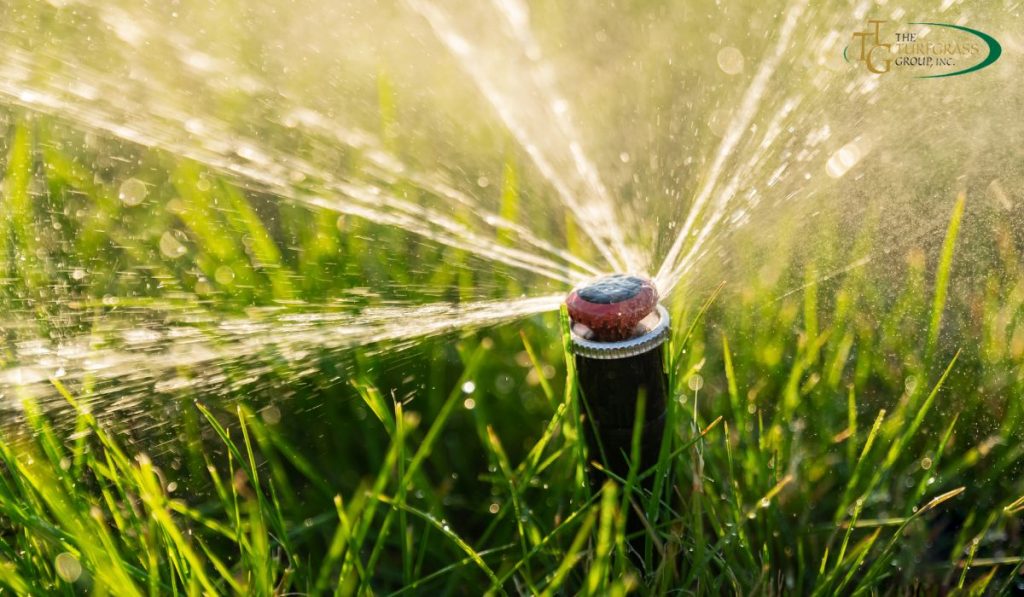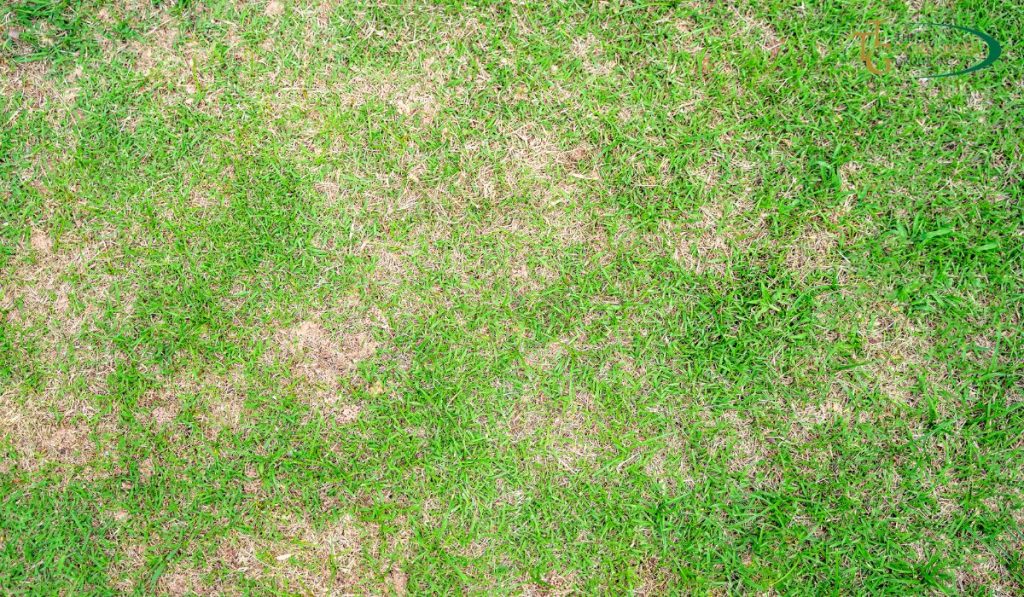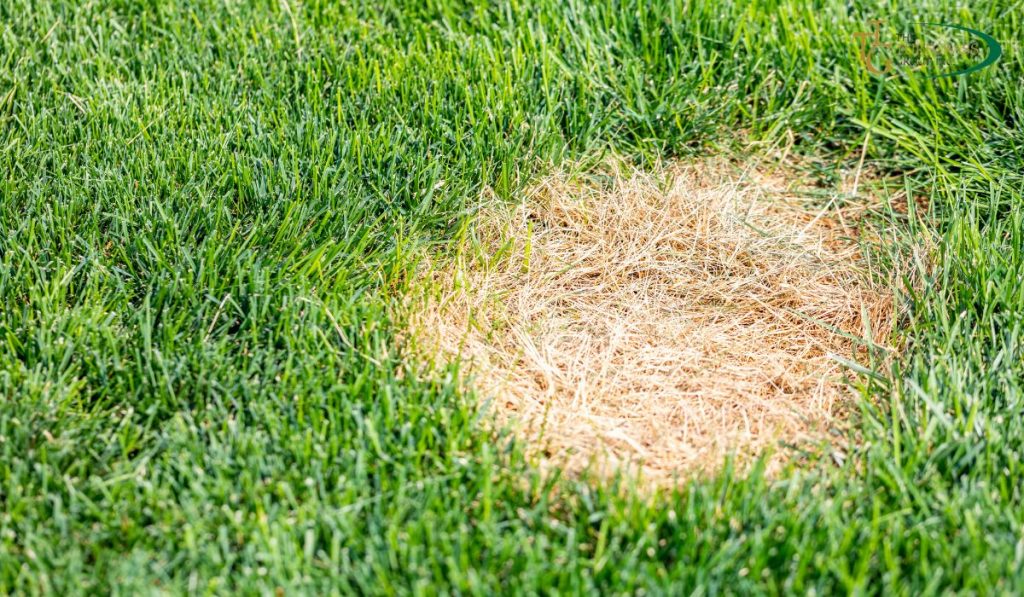
The last thing you want to see when you look out at your yard is brown, patchy grass.
If you are looking for ways to revive dead grass, we may be able to help.
The first order of business is to figure out why your grass is drying out, turning brown, or dying.
Once you identify the root cause of the problem, then you can take the right steps to revive dead grass all over your yard.
It is worth mentioning that it can’t be revived if your grass is really and truly dead.
If your grass is brown, patchy, or dormant, several methods can be used to effectively revive your lawn.
Of course, the best way to avoid a dead lawn is to start with high-quality sod from The Turfgrass Group.
How Do I Know If My Grass Is Dormant Or Dead?
There is a big difference between dead grass and a lawn that is dormant.
An easy way to test your grass is by pulling on the blades.
Take a clump of grass and pull on it gently.
If the plant easily comes out of the ground, chances are it is already dead.
If it takes a bit of work to get the clump of grass out of the soil, it is most likely your lawn is simply dormant.
Live plants such as grass will use the roots to hold themselves in the soil.
Dead plants have dead roots that no longer grip the soil.
Dormant grass can be revived with a bit of TLC.
However, dead grass will need to be resodded in order to restore your lawn.
If there are easy-to-distinguish sections of green and brown in your lawn, chances are the brown or pale areas are dead and need to be resodded.
After all, you can’t actually revive dead grass.
Can You Resod A Dead Lawn?
There is no way to revive dead grass, but you can lay new sod to grow your landscape again from scratch.
If you notice brown, bare, or thinning areas in your lawn, these are clear signs that you need to sow new seed or replace the sod.
It is best to remove old and dead grass before planting a new lawn, but in some cases, you are able to sow new seed over an existing lawn.
Always identify the cause of dying grass before laying down new sod.
Otherwise, you will just end up with another yard full of dying grass.
Contact a professional lawn care service to test your soil.

This will let you know if the dying grass is due to poor soil quality, pests, diseases, or simply poor lawn care.
Why Is My Grass Dying Even Though I Water It?
If you water your grass on a regular basis but still notice brown patches starting to develop, your lawn may need professional care.
There are a few reasons that your grass may be turning brown.
The main cause of brown grass is that the roots can no longer absorb moisture or nutrients from the soil.
Before rushing out to re sod your lawn, try to identify the cause of the problem to prevent its spread or even cure it.
Drought Stress
Drought stress is the most common reason grass turns brown.
Just like any plant, grass will have a negative reaction when there is less moisture in the soil and air paired with higher temperatures.
If you pull on a patch of brown grass on your lawn and it stays firmly rooted, chances are the issue is lack of moisture.
Most turfgrass will go dormant when there is not enough water or if it is too hot outside.
The grass will perk back up when the temperature falls, and moisture is reintroduced into the soil.
Poorly placed sprinklers can also lead to brown spots on your lawn.
Ensure that your sprinklers’ reach covers your whole lawn to prevent under-watered areas.
Weed Problems
Weeds are not only bad for gardens, but they can also wreak havoc on your lawn.
They will compete for moisture and nutrients, leaving areas of your lawn brown or dying.
A pre-emergent herbicide will help keep stubborn weeds out of your landscape.
Fungus and other plant diseases are also common causes of brown grass.
Can Brown Grass Be Revived?
There is no way to revive dead grass, but you can nurture brown or even yellowing grass back to health.
If you live in an area that gets a lot of rain, then you can let mother nature hydrate the lawn on your behalf.
For properties in dryer climates, the best way to revive brown grass is to upgrade the irrigation system.
Either water your grass manually once or twice daily or set up a sprinkler system to water the lawn at set intervals.
If your grass is brown due to pests, diseases, or poor soil quality, it is a good idea to have a lawn care service evaluate your lawn.
They will be able to pinpoint exactly what is wrong and create a customized solution that will bring your lawn back to life.
How Do You Revive Dead Grass Quickly?
There is no way to revive dead grass, but you can keep brown or yellowing grass from dying out.
The best way to revive dehydrated grass is to offer moisture as needed.
To revive a lawn that has spots of dead grass mixed in with dying grass, we have some tips.
Start by raking dead grass spots to loosen the soil and remove the expired blades.
Lightly rake the healthy areas to get rid of dying grass and aerate the soil for root stimulation.
Once you have the land prepared, take a rotary seed spreader and lay down new grass seed over the dead spots.
Using a lawn roller, gently press the seeds into the soil of the dead spots.
Moisten the soil at regular intervals to support healthy growth.
Make sure you also use a high-phosphorus fertilizer to give the grass seeds an extra boost.
How Do You Redo A Dead Lawn
Instead of trying to revive dead grass, you can start over with a new lawn.
Once you pinpoint the cause of your dead lawn, you can plant a new one.
There are a few options to choose from when planting a new lawn.
You can seed the soil, install rolls of sod, or plant turf.
Each option will give you a healthy yard full of luscious green grass that will make you proud.
Seeding to Revive Dead Grass
Seeding a dead lawn is effective but is also the slowest option.
You will need to prepare the soil by removing the dead grass and then enriching the soil ahead of laying down new seeds.
After the seeds are planted, you will need to fertilize and nurture your grass until it reaches maturity.
Installing New Turf to Redo a Damaged Lawn
With sod and turfgrass, you can have a brand-new lawn within a week.
The old lawn will still need to be removed, but you won’t have to wait for seeds to grow.
Once the old lawn has been removed and the soil treated, the sod or turfgrass can be installed.
It takes about a week of regular watering for the roots to take hold, but visually your lawn will look perfect the moment the bales are laid.
Regardless of which option you choose, it is important to care for your lawn to prevent it from turning brown or dying out again.
Looking for the best sod in your area?
The Turfgrass Group has you covered!
We can connect you with a local grower to help you order and install beautiful new sod to get your lawn back on track.
Conclusion
In conclusion, maintaining a vibrant and healthy lawn requires understanding the distinction between dormant and dead grass.
While truly dead grass cannot be revived, brown, patchy, or dormant grass can often be rejuvenated with the right care and attention.
Identifying the root causes of grass issues, such as drought stress, weed competition, pests, diseases, or poor soil quality, is crucial before implementing revival strategies.
It’s important to note that consistent watering, proper irrigation systems, and targeted lawn care are essential for preventing brown patches and promoting lush, green growth.
If you find yourself facing persistent issues with your lawn, seeking professional advice from lawn care services can help pinpoint the problems and provide tailored solutions.

FAQs:
How can I differentiate between dormant and dead grass?
Pulling on a clump of grass can help you determine its condition. If the grass comes out easily, it’s likely dead. Dormant grass, however, will resist being pulled out due to its healthy root system.
Can dead grass be reseeded?
Truly dead grass cannot be revived, but you can lay new sod to start over and grow a fresh lawn.
Why is my grass turning brown despite regular watering?
Brown patches might be caused by drought stress, weed competition, or other factors hindering root absorption. Identifying the underlying issue is crucial for effective revival.
How can I revive brown grass?
For brown or yellowing grass, proper irrigation and soil enrichment are key. Rake dead spots, plant new grass seed, water regularly, and use high-phosphorus fertilizer to encourage healthy growth.
What are the options for redoing a dead lawn?
You can seed the soil, lay sod, or plant turf to establish a new lawn. Seeding is slower but effective, while sod and turfgrass offer quicker results.
How long does it take for new sod or turfgrass to establish?
While it takes about a week for the roots to take hold, visually, your lawn will appear perfect once the sod or turfgrass is laid.
What if my lawn faces persistent issues?
If you’re struggling with ongoing lawn problems, consider consulting professional lawn care services. They can diagnose issues and recommend tailored solutions for your specific lawn’s needs.